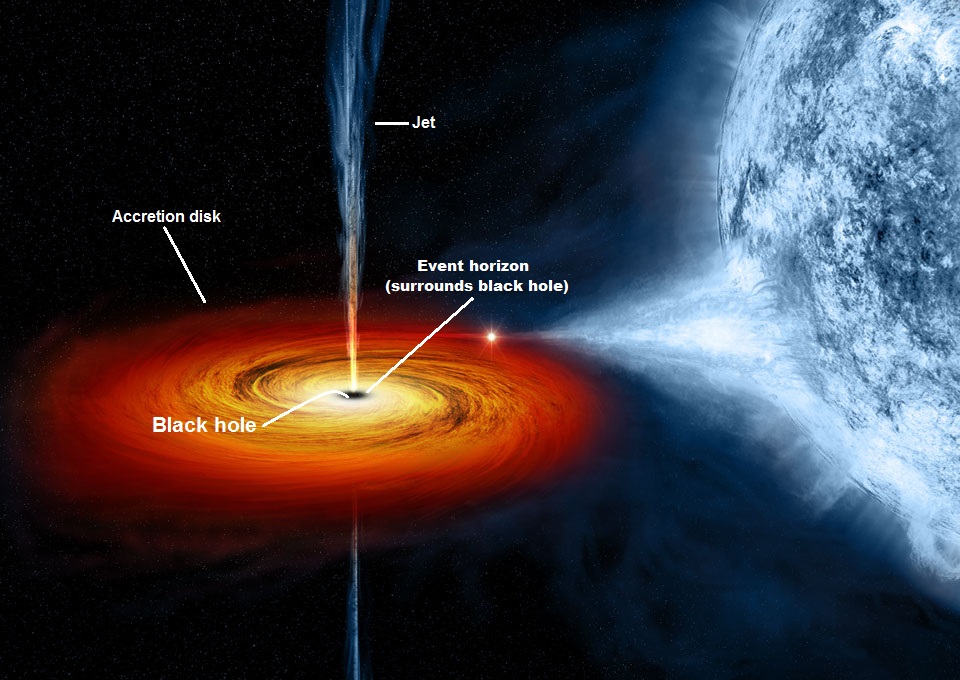

It can be easy for one to feel insignificant in this universe. After all, we are small creatures on a relatively small rock that orbits one of many billion stars within one of many billion galaxies. However, the next time you find yourself experiencing this dilemma, try to take a moment and think about this one simple, but astounding fact: You are made of matter. To be more specific, you are made of atoms.
While many writers, such as Carl Sagan, have elaborated on the deep connection between our atoms and the stars, I’d like to talk instead about a different astronomical feature. This one is less obvious, but a connection that is no less real: to black holes.
However, before I am able to explain our link to black holes, I feel it is necessary to review some fundamental principles of nature. Just about everyone has at least heard of black holes. Many people know that they are gravitational wells from which not even light can escape. What many people don’t know, however, is that almost anything is able to become a black hole. That’s right, anything (you, me, pizza, a kitten — everything) can become a black hole .
This is due to an important feature of atoms: they have a lot of empty space. In the center of an atom is its nucleus, consisting of protons and neutrons. Surrounding the nucleus is the electron cloud. To put all this empty space into perspective: If we were to scale up the atom so that the nucleus was about the size of a baseball, the electron orbit would be approximately three kilometers wide (~1.8 miles). Remember, all atoms have this empty space – including the ones that we are made of. If we were to remove all of the empty space in all the atoms that make up the human race, the entire human race could fit into an area about the size of a sugar cube.
Now, imagine if you were to take an object and compress it into a space so tight that you cause its escape velocity (the speed needed to “break free” from the gravitational attraction of an object) to be greater than the speed of light. What would happen?
The object would become a black hole. This idea sounds strange at first. After all, black holes are usually thought to be enormous cosmological vacuum cleaners, sucking up everything in their wake. This isn’t the case, though. Because of matter’s spacious nature, black holes can be very, very tiny. As a matter of fact, you can become a black hole! Of course, you would have to be compressed into such a sphere so small that it meets the requirements mentioned earlier in this paragraph regarding escape velocity, and I’m not so sure that would be a comfortable state of being.
Just how small would this sphere have to be? In 1915, a German physicist by the name of Karl Schwarzschild solved this problem while working on the Einstein field equations involved in general relativity. In his work, Schwarzschild provided for us an equation that could tell you the radius of the sphere an object would have to be squished to the size of in order for it to become a black hole. As complex as this may sound, the equation is actually very simple: Rs = 2GM/c^2, where “Rs” is the Schwarzschild radius, “G” is Newton’s gravitational constant, “M” is the mass, and “c” is the speed of light. If you want to find out what your own Schwarzschild radius is, simply plug your mass in kilograms into the “M” slot. Assuming the calculation is performed correctly, the result will be the Schwarzschild radius. Squish yourself into a sphere of which the radius’ length is at most your Schwarzschild radius, and voila! You will be a black hole.
Now, being a black hole doesn’t mean you’ll suddenly start to suck up everything around you. Your mass hasn’t changed a bit, so your gravitational impact on your surroundings will remain the same. For example, if the sun were to suddenly become a black hole, all planets would continue to orbit it just as they do now, because they would not be within the sun’s event horizon, which is really what the Schwarzschild radius is — the radius of an object’s event horizon (the “point of no return” where nothing can escape being sucked into the object). Moreover, this is a region of space-time within which events cannot affect outside objects. When it is said that nothing can escape from a black hole, the more accurate way of saying this would be “nothing can escape from a black hole after it has passed the event horizon.”
So, in the event of an existential crisis, look up to the sky. Acknowledge that we are intrinsically connected to the marvels of the universe that can — and can’t — be seen. As Neil DeGrasse Tyson so eloquently put it, “That makes me smile and I actually feel quite large at the end of that. It’s not that we are better than the universe; we are part of the universe. We are in the universe and the universe is in us.”